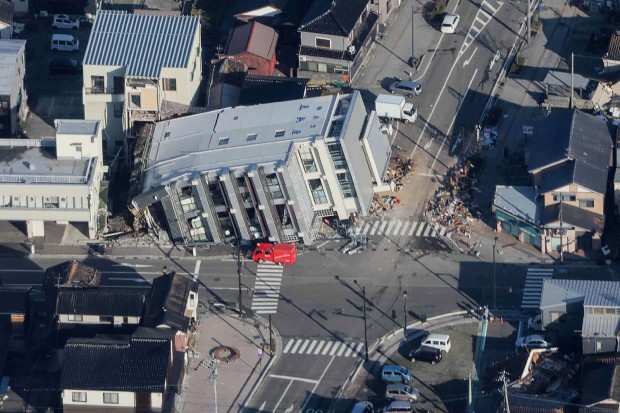The earthquake that struck Japan during the New Year's holiday has profoundly impacted residential areas, buildings, and educational institutions. In response, the Japanese government's earthquake rehabilitation program strongly emphasizes schools and universities. Classes will continue despite the aftershocks nationwide, and affected students will be relocated.

(Photo : Getty Images/JIJI PRESS)
Effect of the Recent Strong Earthquake in Japan
A 7.6 magnitude earthquake struck the remote Noto peninsula in Japan on New Year's Day, causing houses to collapse and igniting a massive fire. As a result, thousands of residents were forced to abandon their homes. Authorities have reported that at least 213 people have lost their lives, and it is anticipated that the number of fatalities will continue to grow. Adverse weather conditions, such as snow and rain, and severed roads have impeded access to struck areas, including the northernmost portion of the Noto Peninsula.
Considering the magnitude of the earthquake that struck northeast Japan in 2011, it was the most powerful earthquake that the country has experienced since then. Although many schools in Japan have resumed classes following the country's winter break, certain educational institutions still have not been able to get back to class in the cities and towns affected the worst by the earthquake and its aftershocks. Thus, the authorities are currently evaluating the extent of the structural damage caused by the earthquake and its aftershocks.
After days of confusion and distress in the aftermath of the massive earthquake and its numerous aftershocks, displaced children were allowed to run and play together when Save the Children inaugurated a child-friendly area at an evacuation center in Nanao City, Ishikawa Prefecture.
People in Japan are generally well-prepared for earthquakes, which is not surprising given that it is one of the countries most prone to quakes on the globe. On the other hand, the most recent earthquake highlighted the importance of ongoing education and training in earthquake preparedness, particularly in educational institutions and business settings. Among these are conducting regular drills, ensuring that emergency kits are prepared, and being aware of the most secure locations to take cover in the event of an earthquake that occurs.
Also Read: Bronx Building Collapse Faces Seven Violations Due to Unsafe Structural Conditions
Government's Earthquake Recovery Program
The Japanese government's rebuilding effort prioritizes minimizing school and university interruption after the Noto Peninsula was rocked by the largest earthquake in 40 years on New Year's Day.
Due to the ongoing aftershocks, students have been relocated from the town of Wajima, which is located in Ishikawa. After their schools were turned into evacuation centers for some of the nearly 100,000 people relocated from the worst-hit areas, 250 junior high school children abandoned their homes.
Teachers will reportedly travel to the new location to continue teaching the pupils, remaining in a different town for around two months. Additionally, other cities that have been affected, such as Suzu and Noto, are implementing similar group evacuation techniques.
The primary national university examinations were scheduled on January 13 and 14, less than two weeks after the catastrophic earthquake that rocked the region. Thus, to assist those students affected by the disaster, the Ministry of Education has declared that they may retake university entrance exams on January 27 and 28 at a location designated at Kanazawa University in Kanazawa, the administrative center of Ishikawa Prefecture. It is also possible for students who cannot attend these rescheduled examinations to retake them later.
Related Article: Japan's Traditional Earthquake-Proofing Architecture Saves Akasaki District From 7.5 Magnitude Quake







